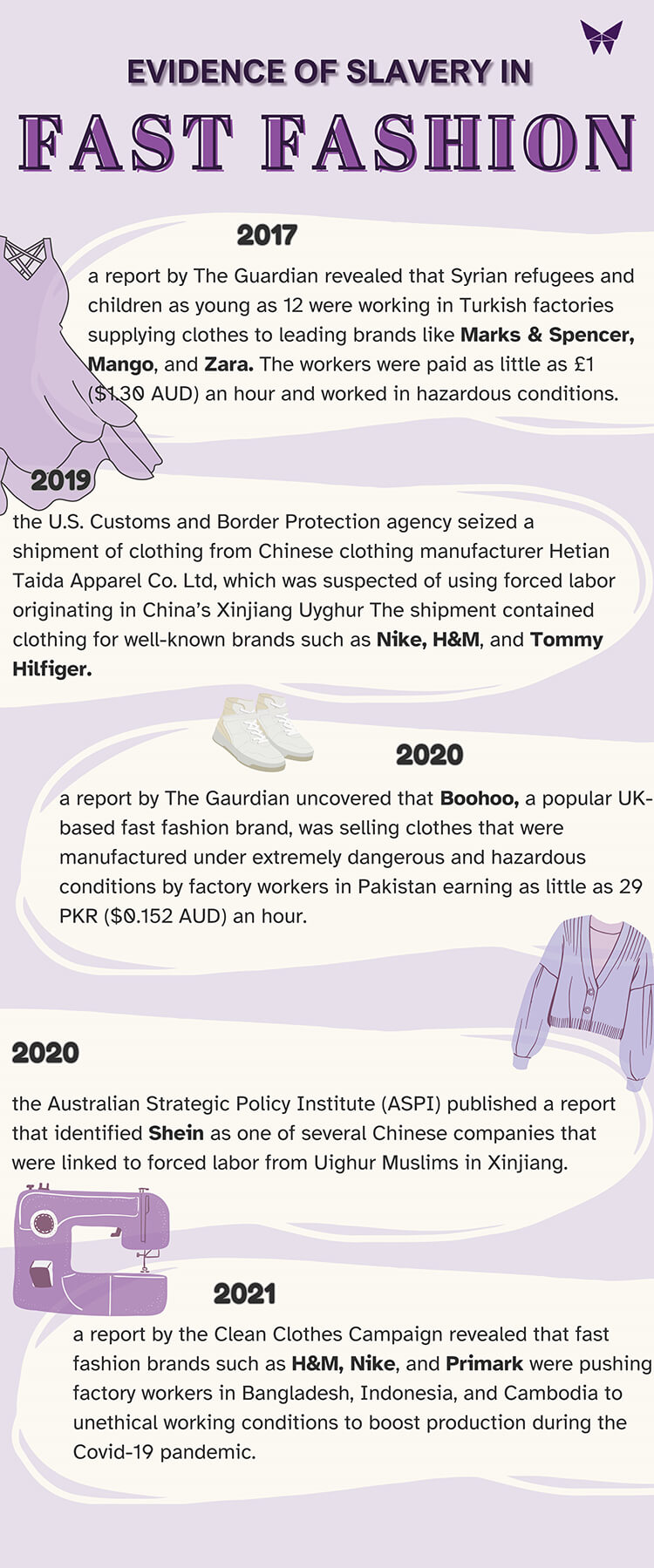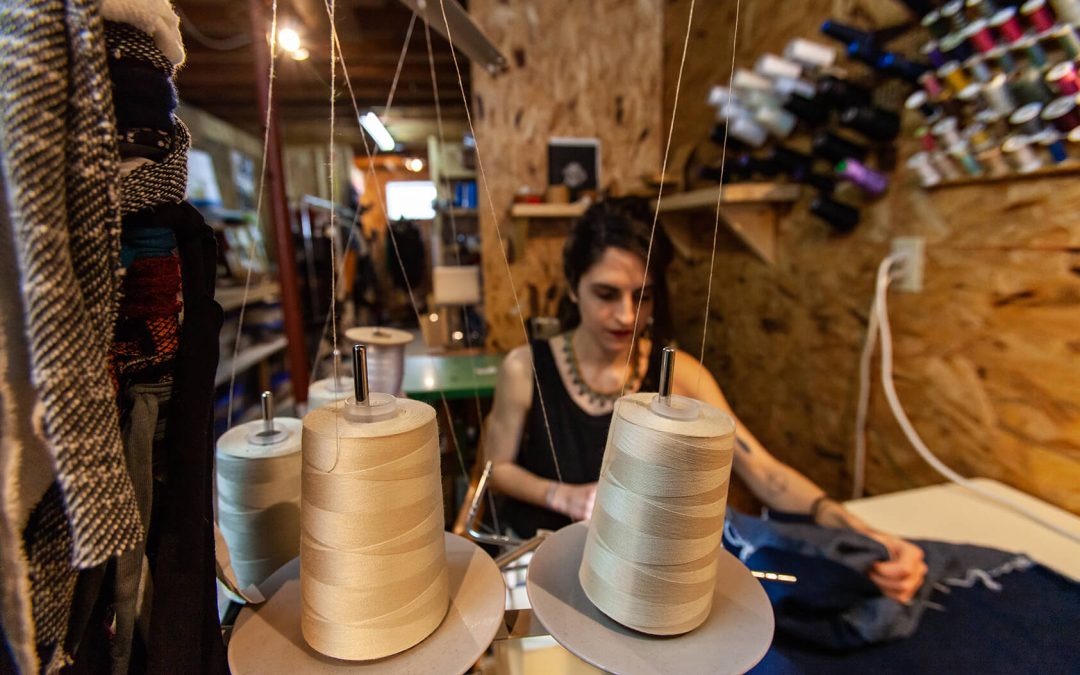The dazzling runways of fast fashion shows may seem like a glamorous world of luxury and beauty, but there’s a hidden reality that lurks behind the scenes. From the cotton fields in Uzbekistan to the sweatshops in Bangladesh, the fashion industry’s dark side of slave labour ties is rampant. In the wake of Sydney Fashion Week 2023 and the 10-year anniversary of the Rana Plaza garment factory tragedy in Bangladesh, it is important to be aware of the truth behind the glitz and glamour of fast fashion, revealing the human rights violations and exploitation that many designers and brands turn a blind eye to in their quest for the latest trends.
Ethical Concerns Over Fast Fashion
Fast fashion has revolutionised the clothing industry with its inexpensive and trendy garments, but at what cost? Australia has a growing market for fast fashion brands that offer affordable and trendy clothing options. Some of the popular online fast fashion brands in Australia include Shein, Boohoo, Missguided, PrettyLittleThing, Showpo, and Princess Polly. These brands offer a wide range of clothing options at competitive prices. However, the fast-paced nature of their production and supply chain has raised concerns about the ethical impact of their production. The industry’s demand for fast production has led to the exploitation of workers through slave labour ties. Despite these findings amongst certain brands, they continue to be popular among consumers who value convenience, affordability, and fashion-forward styles.
To Highlight Some Examples:

Australia’s Modern Slavery Act
Since the Modern Slavery Act 2018 came into effect in Australia, many brands and companies have taken steps to comply with the Act and address modern slavery risks in their operations and supply chains. However, there is still more work to be done to ensure that all brands are complying with the Modern Slavery Act and taking adequate steps to address modern slavery risks. The Australian Government has recently announced plans to strengthen the Act to improve reporting requirements and increase penalties for non-compliance.
How Can You Identify Fast Fashion’s Ethical Issues When Purchasing Clothing?
- Low prices: One of the most obvious signs of fast fashion is the low price point. The reality is that these prices are often too good to be true, and it’s important to ask yourself how a brand can offer such low prices.
- Quality of the clothing: Fast fashion is often made with cheap materials and cut corners in the manufacturing process. This can result in clothes that don’t last long and end up in landfills, creating waste and contributing to environmental problems.
- Brand transparency: Look for brands that are transparent about their supply chains and manufacturing processes. If a brand doesn’t disclose this information, it can be a red flag that they have something to hide.
- Labour conditions: Fast fashion often relies on cheap labour in developing countries. Look for brands that are committed to ethical labour practices and pay their workers fairly.
Consumer Power:
As consumers, we can make choices that reduce the demand for fast fashion and encourage brands to adopt more sustainable and ethical practices. Here are some ways consumers can take responsibility:
-
- Choose quality over quantity: Instead of buying lots of cheap clothing, invest in a few high-quality pieces that will last longer.
- Buy from sustainable and ethical brands: Look for brands that prioritise sustainability and ethical practices and support them with your purchasing power.
- Feedback and Accountability: Consumer feedback is an essential tool for holding clothing brands accountable for issues with ethics. Here are some ways consumers can provide feedback:
- Contact the brand directly to express your concerns about their ethical practices via consumer feedback message portals, email, or phone calls.
- Use social media: Social media platforms like Twitter and Instagram can be powerful tools for holding brands accountable. Use these platforms to share your concerns and to call out brands that are not taking sufficient action.
- Leave reviews: Leaving reviews on websites like Yelp or Google can help other consumers make more informed choices about the brands they support.
- Shop second-hand: Buying second-hand clothing is a great way to reduce waste and avoid contributing to the demand for fast fashion.
- Educate yourself: Learn about the impact of fast fashion on workers and the environment and make informed choices about the brands you support. Here are some websites that provide information about whether or not a brand is following ethical business practices:
- Good On You: This website rates clothing brands based on their environmental impact, labour practices, and animal welfare.
- Better World Shopper: This website provides a ranking of brands based on their social and environmental impact.
- Fashion Revolution: This website provides information on the fashion industry’s social and environmental impact and promotes transparency and accountability in the industry. Extend the life of your clothes:
- Take care of your clothes, repair them when they get damaged, and donate or recycle them when you no longer need them.
By taking these steps, we can reduce the demand for fast fashion and encourage brands to adopt more sustainable and ethical practices. Ultimately, we all have a responsibility to ensure that the clothing we wear is produced and consumed in a way that is free of modern-day slavery and other human rights abuses.
Join our Community
Help raise awareness and join a local volunteer team, contact us here.
Or, if you would like to get our monthly update, opt-in here.
If you would like to support a survivor, donate here. (Tax-deductible)
THANK YOU FOR TAKING THE TIME TO READ OUR BLOG – Fashion’s Dirty Secret: The Use of Modern-Day Slavery in the Clothing Industry (Please review it or share it with others.)

